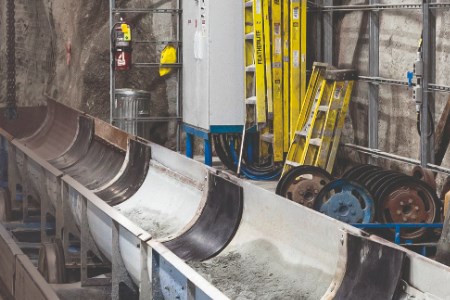In today’s mining industry, companies face increased pressures: lower ore grades, deeper mines, increased labour and material costs, and the call to decarbonise operations, among others.
Prioritising these concerns is a complex undertaking. Companies choosing a direction can look for activities and technologies that address multiple objectives.The single greatest target for decarbonising mining operations is material haulage. A recent report by McKinsey estimates that traditional material haulage accounts for 36% of the emissions generated by a typical mine – the most significant emissions-generating activity.In order for mining companies to achieve stated decarbonisation targets, OEMs are racing to develop material haulage solutions that reduce emissions. One alternative to truck haulage that is currently installed in applications around the globe is the Railveyor autonomous, fully electric material haulage solution. The real-world performance of the Railveyor system has now been validated at Agnico Eagle’s Goldex mine by CanmetMINING, providing a useful comparison to existing diesel haulage and potential BEV fleet systems.The understudied complexity in swapping diesel for batteriesEvery deposit and mine plan is unique – and there are many valid material transport strategies, each with their own ideal use case. Replacing diesel truck haulage with battery electric vehicles (BEVs) is an increasingly attractive solution to miners. However, replacing fleets with BEVs places additional burdens on operations that are becoming more commonly known. On the user level, designing and implementing battery charging, storage, and disposal strategies is a novel and complex project. On a societal scale, economically sourcing the raw materials for a transition to electric vehicles for material haulage in mining – in addition to serving the massive projected demand for similar batteries in personal and commercial transportation – presents serious challenges.The existing power generation and electrical grid infrastructure would also need to be substantially upgraded in order to handle the projected demand from BEVs. In a report from April 2023 titled ‘Electrifying mines could double their electricity demand’, McKinsey modelled the increased electricity demand created by simply swapping diesel trucks for their battery-powered counterparts. McKinsey claims that electrifying just the existing global iron ore industry would require the generation of additional electricity equivalent to 10 –15% of Australia’s current consumption.The increased demand caused by electrification, including charging infrastructure for BEVs, may also be massive at the level of a single mine. In estimates calculated in 2023 by Warm Springs Consulting and released at the Electric Mine Conference in Tucson, Arizona, a theorised large open-cut mine in Australia might need 56 MW of electricity to support the charging infrastructure for a fleet of BEV trucks with trolley assist and dynamic charging. Even at a less productive mine, operators must ask if they can account for an extra 10 – 20 MW of power for a BEV haulage electrification project.Enjoyed what you’ve read so far? Read the full article and the rest of the January/February Issue of Global Mining Review by registering today for free!
Read the article online at:
This article was published by:
Visit the original article here



